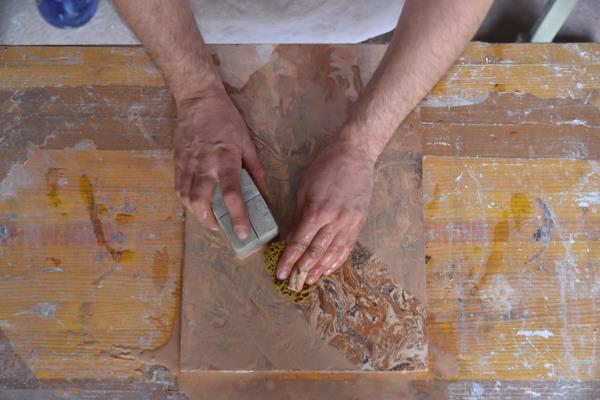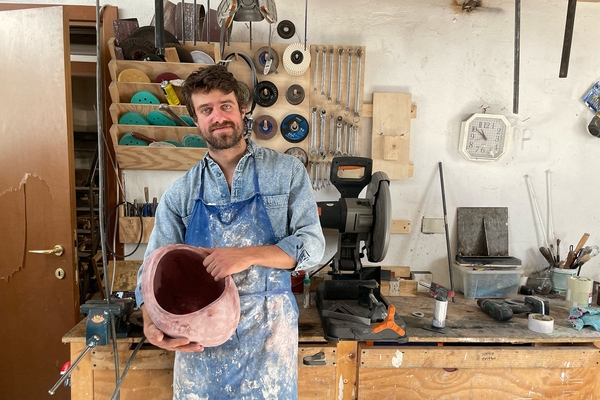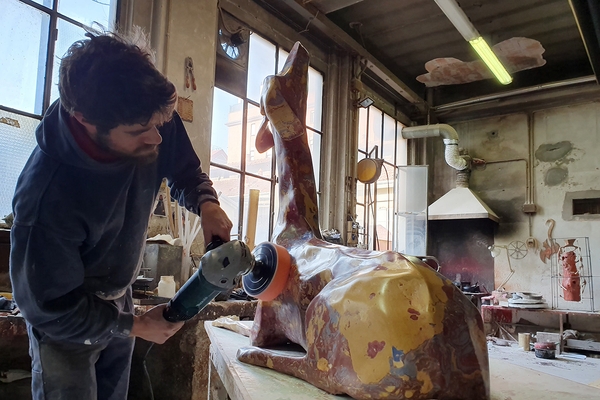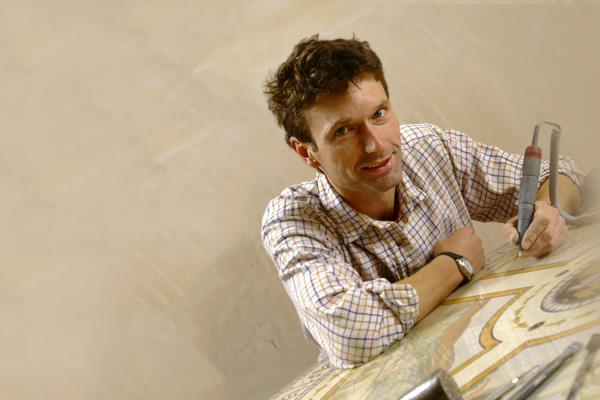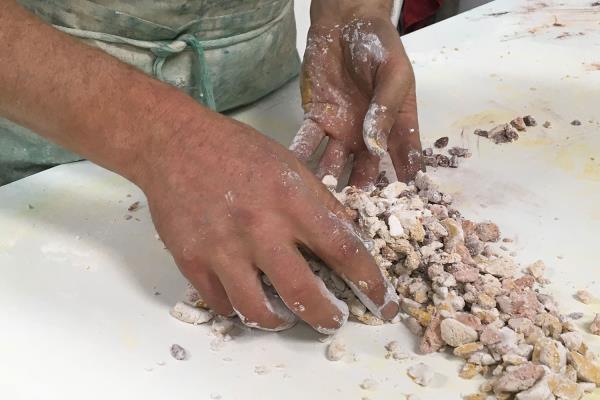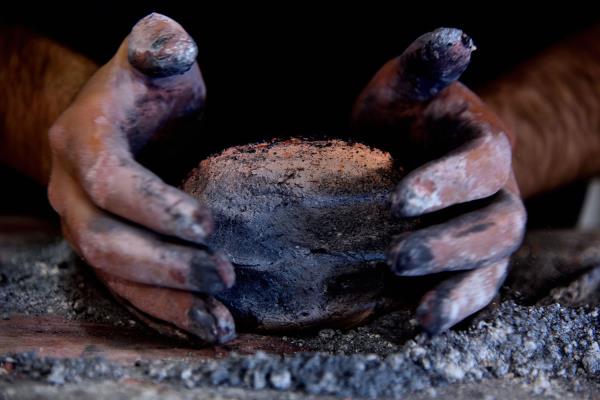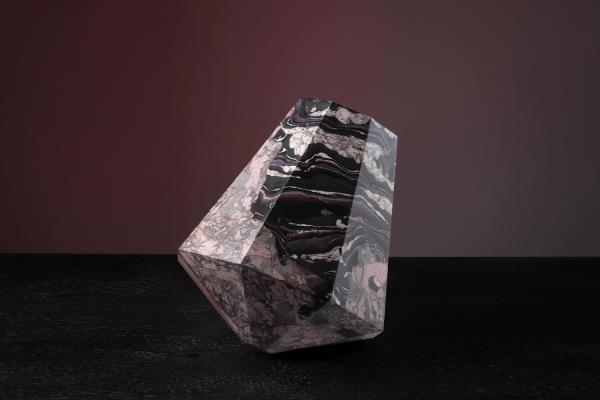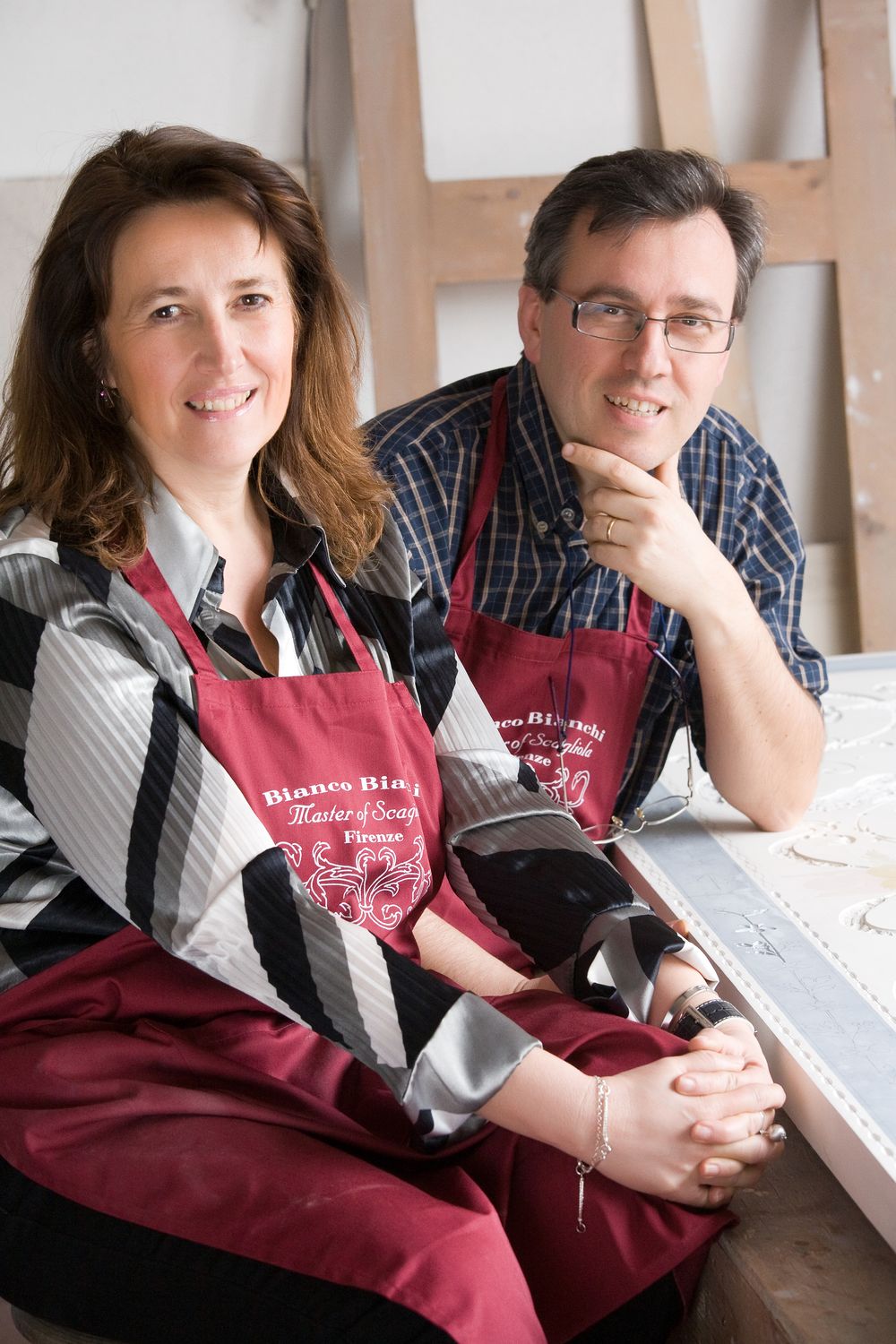
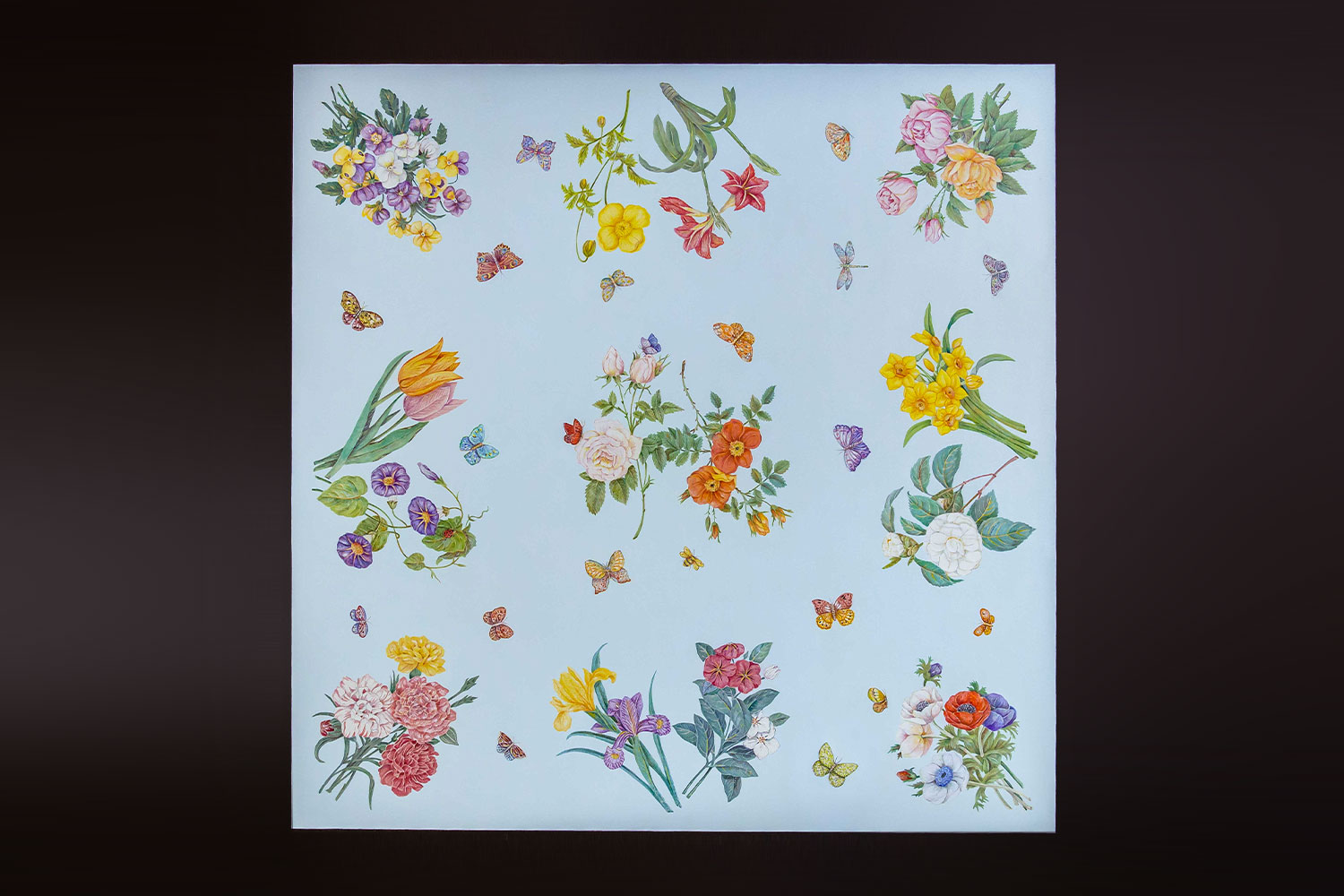
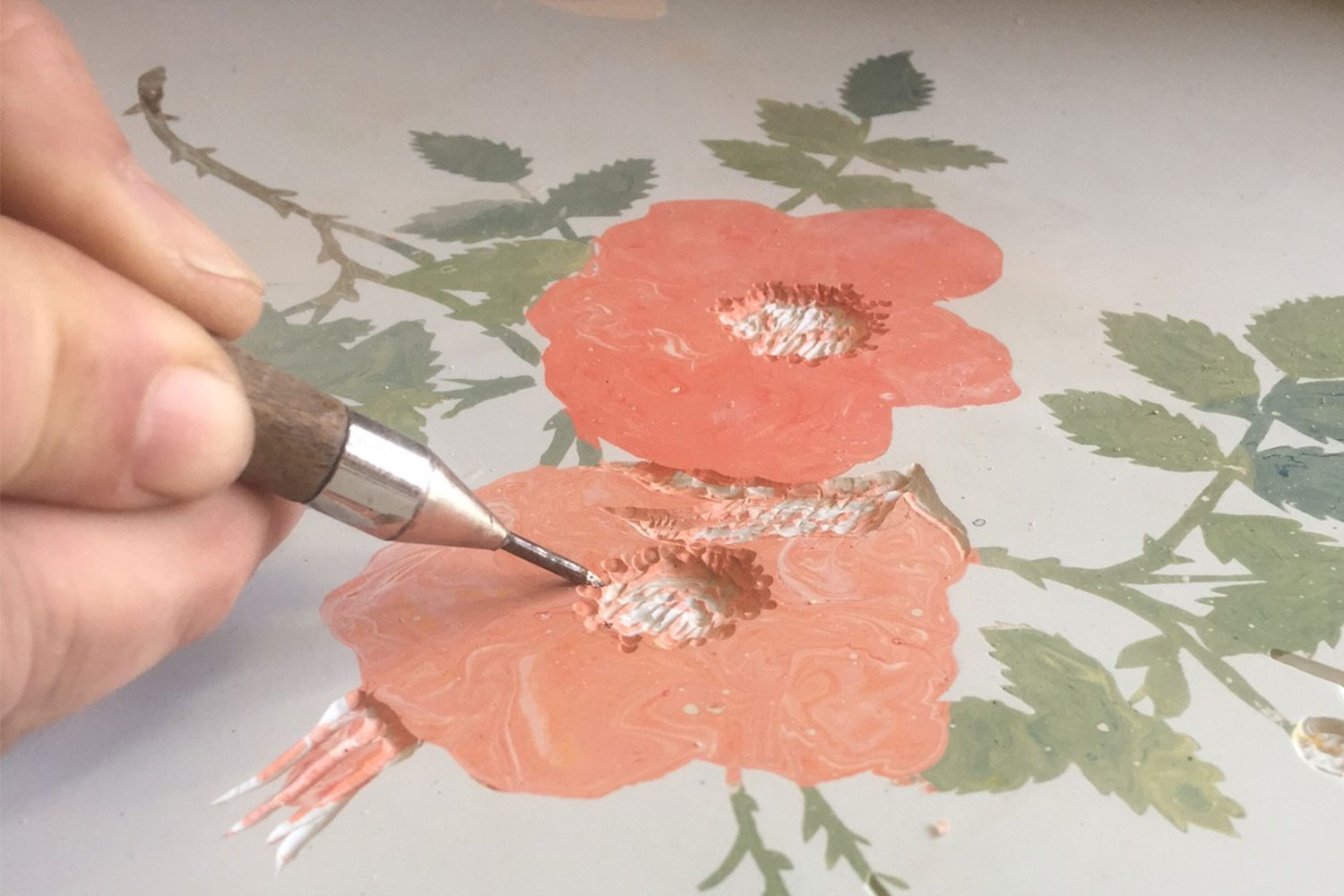
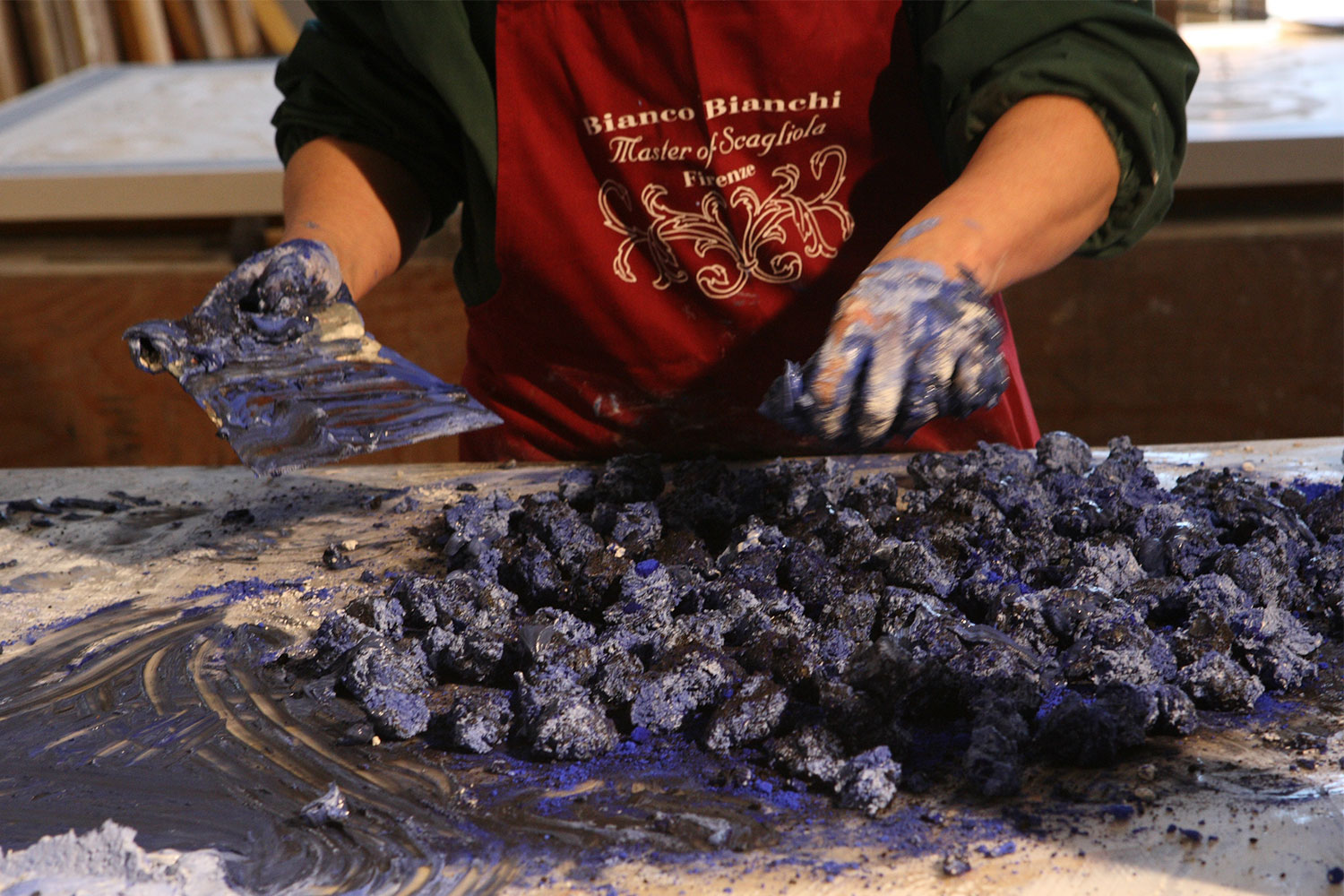




Elisabetta & Alessandro Bianchi
A traditional Tuscan art revived
- Elisabetta and Alessandro took over the workshop from their father
- In 2016 they won the Maestro d'Arte e Mestiere (MAM) prize
- Next to the workshop is a museum presenting the history of scagliola
Scagliola developed in the early 17th century as imitation marble for geometrical decorations in architectural works, before taking on more pictorial qualities. It was originally produced in the Tuscan-Emilian Apennines, which were naturally rich in selenite crystals, from which the plaster used in this technique was obtained. Thanks to the Medici family, scagliola became a successful artistic medium at the beginning of the 18th century, although the fashion died out fast: in the mid 19th century, workshops started to shut down and shops selling scagliola soon disappeared. Bianco Bianchi revived this tradition after World War II, and his children Elisabetta and Alessandro continue to practise this rare carft to the present day, now assisted by Alessandro’s son, Leonardo.
Interview
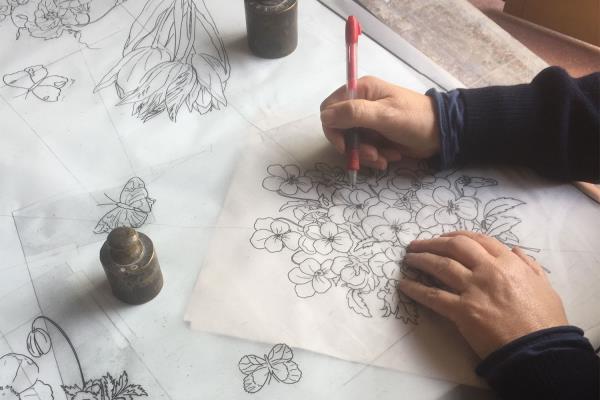
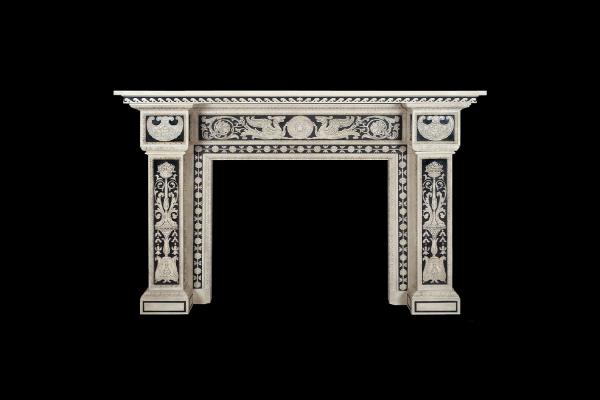
- Why did your father decide to pick up this craft?
- He was struck by the scagliola technique while visiting the Vallombrosa monastery of Regello, close to Florence. He was working as a clerk, but in his free time he liked to dedicate himself to art. He started studying and with the help of our mother he began to create his first scagliola works.
- When did the passion take over?
- In 1965 he left his job and opened a workshop in central Florence. The following year, the city was hit by the great flood and he lost everything. Instead of giving up, he rolled up his sleeves and reopened his workshop elsewhere, continuing to collect antique pieces, which we now exhibit in our museum.
- How do you find working together?
- Alessandro: it can be difficult, but also very stimulating. We argue for hours trying to align the artistic demands with the limits of the technique. The important thing is to experiment and to apply our experience and traditional know-how in a contemporary way.
- How did your collaboration with Gianni Versace develop?
- In the 1980s Versace asked us to create a number of scagliola items to furnish all his houses, from Villa Fontanelle on Lake Como to Casa Casuarina in Miami. Among the many pieces we produced, one of the most remarkable is a big table with a Medusa’s head.
Elisabetta & Alessandro Bianchi are master artisans: they began their career in 1980 and they started teaching in 1990
Where
Elisabetta & Alessandro Bianchi







